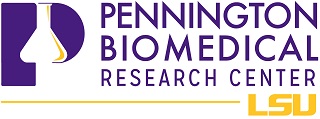About the Database
Available Data Sets
There are two sets of data available for download and use: SAS files (labeled analysis files) and comma delimited files (labeled ‘raw files’). Both are structured in a relational database strategy, with keywords of ID (DEIDNUM) and Visit (VISIT) connecting information in the files to the individuals.
For the analysis dataset, downloading the data from the website creates 52 SAS dataset files. These individual files contain all the data from the CALERIETM study, but need to be linked to create analysis files. The documentation of the analysis datasets lists the available datasets (pages 1 & 2) and the variables contained in each (pages 3-180). An example of a SAS program that can join the files to test a simple hypothesis can be found here.
The raw database is structured by content area in a relational strategy - 52 databases which can be connected by ID and VISIT. These are slightly different from the SAS files. There are 52 small databases containing the SubjectID and Visit# and variables collected. To see when variables within datasets were measured look at pages 1-3 of the rawdata contents file.
There is extensive information within the section with technical documents describing the dataset, rules describing the derivations of analysis variables, data collection forms, and a table of available measures which provides detailed documentation on each dataset and the variables and visits pertaining to each.
Available Statistical Support
Since the inception of the CALERIETM I studies, final data management and the vast majority of day-to-day analysis has been performed by Manjushri Bhapkar. Ms. Bhapkar is a skilled database programmer and statistician who continues these roles in this U24 center grant. Ms. Bhapkar has several roles in CALERIETM:
DATABASE MAINTENANCE: There are occasional changes in the main database which need to be updated in the database accessed through the website. Additionally, when specimens are requested, after analysis, the result data values are sent back to the data center and absorbed into the main database. Finally, Ms. Bhapkar maintains the identity link between the specimens and the extant database for the main trial.
REQUESTS FOR SAMPLES: Samples are currently stored at the NIA Aging Research Biobank. Sample access requires application through the Biobank (see Biorepository) and approval by the CALERIE Network Steering Committee. At the point of an approved request for samples by the steering committee, she can facilitate communication between the requesting study and the specimen storage facility, insuring that the requested specimens are appropriate and linked to appropriate data. After analyses, she assists with ensuring specimen data return to the Network and linkage of those data to the main trial information.
DATABASE ASSISTANCE: Advice on procedures and methods for linking databases to produce analysis work files is available. Ms. Bhapkar’s extensive experience using and analyzing CALERIETM provides an invaluable resource for both common and innovative ways to produce data files appropriate for addressing individual scientific questions using CALERIETM. Building the databases is generally performed in SAS. However, using the comma delimited CSV CALERIETM files, users can transfer the CALERIETM database to any analytic programs.
ANALYSIS ASSISTANCE: Along with Dr. Carl Pieper, Ms. Bhapkar can provide analytic assistance – informing on the analysis methods used in prior CALERIETM analyses, providing advice on data handling as these decisions interface with statistical procedures, and advising on methods employed to date in CALERIETM which incorporate the common and unique design issues inherent in the analysis of a longitudinal clinical trial. Depending on the level of complexity, analytic questions using CALERIETM will be addressed by either Ms. Bhapkar or Dr. Carl Pieper. While assistance and advice are freely offered, programming is not available from CALERIETM without prior approval by the steering committee.
To contact CALERIETM with requests for assistance please email: calerie@duke.edu.
Available Specimens
CALERIETM SAMPLES: Numbers of participants with at least one stored sample of the type and at the times indicated. Please note that the samples are retained at the NIA Aging Research Biobank and the numbers below reflect sample numbers at the time of transfer to the NIA Aging Research Biobank. Please confirm sample availability with NIA Aging Research Biobank.
| Sample Type | Baseline | 3 month | 6 month | 12 month | 18 month | 24 month |
| Serum | 207 | 201 | 196 | 188 | 178 | 180 |
| Serum (OGTT) | 205 | 184 | 176 | |||
| Plasma (EDTA) | 207 | 201 | 196 | 187 | 182 | 180 |
| Plasma (citrate) | 207 | 188 | 180 | |||
| RNA | 207 | 189 | 180 | |||
| DNA | 207 | 188 | 180 | |||
| Urine (no additive) | 208 | 187 | 180 | |||
| Urine (boric acid) | 208 | 187 | 180 | |||
| Skeletal muscle samples | 88 | 43 | 30 | |||
| Skeletal muscle IHC | 88 | 43 | 30 | |||
| Skeletal muscle RNA | 91 | 43 | 31 | |||
| Adipose tissue samples | 80 | 33 | 16 | |||
| Adipose tissue IHC | 84 | 39 | 16 | |||
| Adipose tissue RNA | 92 | 43 | 28
|
OGTT = Baseline sample from oral glucose tolerance test; IHC = tissue/slides prepared for immunohistochemistry





